Buy Buspirone Medication Online
$162.27 – $411.08Price range: $162.27 through $411.08
Buy Buspirone Medication Online
Buspirone is a prescription medication primarily used to treat anxiety disorders, particularly generalized anxiety disorder (GAD). It belongs to a class of drugs known as azapirones. Buspirone works differently from other common anxiolytics like benzodiazepines. It does not have the same sedative or muscle-relaxing effects and is not addictive, making it an appealing option for long-term anxiety management.
Buy Buspirone Medication Online
Buspirone is a prescription medication primarily used to treat anxiety disorders, particularly generalized anxiety disorder (GAD). It belongs to a class of drugs known as azapirones. Buspirone works differently from other common anxiolytics like benzodiazepines. It does not have the same sedative or muscle-relaxing effects and is not addictive, making it an appealing option for long-term anxiety management.
How Buspirone Works:
Buspirone affects neurotransmitters in the brain, particularly serotonin and dopamine. It is thought to act as a partial agonist at serotonin (5-HT1A) receptors, helping to balance the levels of serotonin, which plays a key role in mood regulation.
Buspirone Key Characteristics:
- Non-sedative: Unlike benzodiazepines, buspirone does not typically cause drowsiness or sedation.
- Non-addictive: It has a lower risk of dependence or abuse, making it suitable for long-term use.
- Delayed onset: Buspirone usually takes 2–4 weeks to begin showing its full effects, which can be slower compared to immediate relief from benzodiazepines.
- Minimal withdrawal symptoms: Buspirone typically does not cause severe withdrawal effects if stopped, unlike benzodiazepines.
Buspirone Common Side Effects:
Buspirone Uses:
- Generalized Anxiety Disorder (GAD)
- Off-label: Depression (as an adjunct treatment), irritability in mood disorders
Buspirone is generally well-tolerated, but as with any medication, it should be taken under the guidance of a healthcare provider.
Buspirone Pharmacology
| Site | Ki (nM) | Action | Species | Ref |
|---|---|---|---|---|
| 5-HT1A | 3.98–214 21 (median) |
Agonist | Human | [35][36] |
| 5-HT1B | >100,000 | Agonist ? [37] | Rat | [38] |
| 5-HT1D | 22,000–42,700 | Agonist ? | Human | [39][40] |
| 5-HT2A | Antagonist | Human | ||
| 5-HT2C | 1,100–6,026 | Antagonist ? [37] | Rat/pig | [38] |
| 5-HT7 | 375–381 840 |
Antagonist ? [37] | Rat Human |
[41][42] [43] |
| α1 | 1,000 | Antagonist | Rat | [38] |
| α2 | 6,000 | Antagonist | Rat | [44] |
| α2A | 7.3 (1-PPTooltip 1-(2-Pyrimidinyl)piperazine) | Antagonist | Human | [38] |
| β | 8,800 | Antagonist | Rat | [38] |
| D1 | 33,000 | Antagonist | Rat | [38] |
| D2 | 484 240 |
Antagonist | Human Rat |
[45] [38] |
| D3 | 98 | Antagonist | Human | [45] |
| D4 | 29 | Antagonist | Human | [45] |
| mAChTooltip Muscarinic acetylcholine receptor | 38,000 | ? | Rat | [38] |
| GABAA (BDZ) |
>100,000 | – | Rat | [38] |
| Values are Ki (nM). The smaller the value, the more strongly the drug binds to the site. | ||||
Buspirone acts as a partial agonist of the serotonin 5-HT1A receptor with high affinity. It is a partial agonist of both presynaptic 5-HT1A receptors, which are inhibitory autoreceptors, and postsynaptic 5-HT1A receptors. It is thought that the main effects of buspirone are mediated via its interaction with the presynaptic 5-HT1A receptor, thus reducing the firing of serotonin-producing neurons. Buspirone also seems to have lower affinities for the serotonin 5-HT2A, 5-HT2B, 5-HT2C, 5-HT6, 5-HT7 receptors where it probably acts as an antagonist.
| Quantity | 5mg/60pills, 5mg/90pills, 5mg/120pills, 10mg/60pills, 10mg/90pills, 10mg/120pills |
|---|
Be the first to review “Buy Buspirone Medication Online” Cancel reply
Related products
Anxiety
painkillers
Anxiety
painkillers
ADHD
painkillers
ADHD




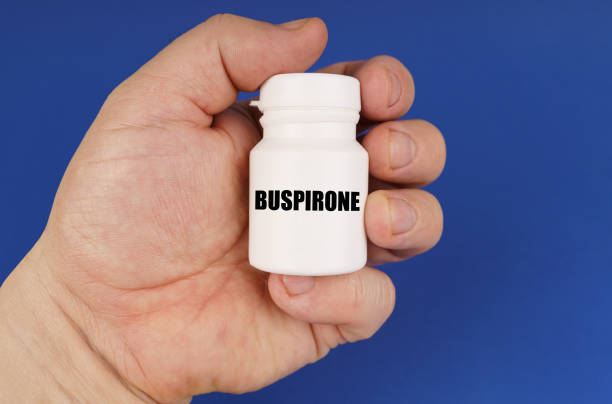
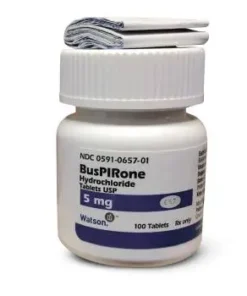



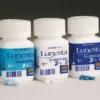



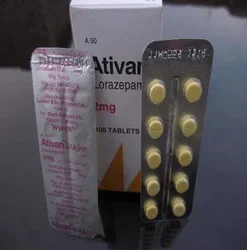







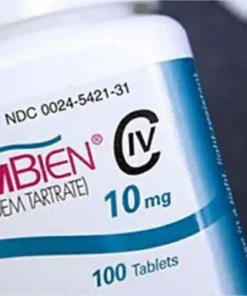
Reviews
There are no reviews yet.